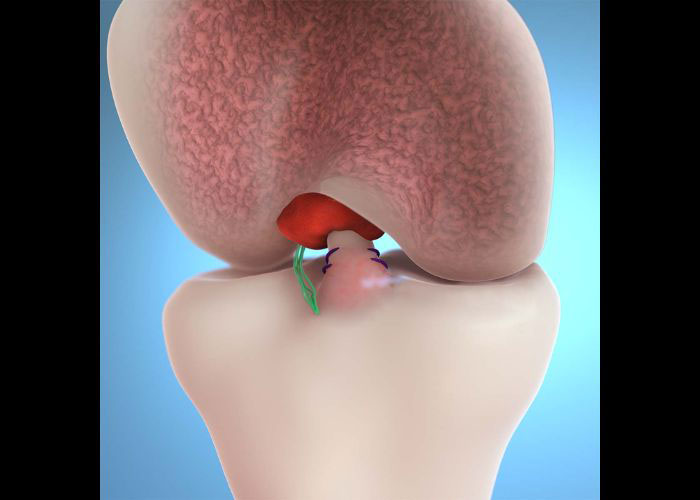What is elbow arthritis?
The humerus (upper arm bone), radius (smaller forearm bone on the thumb side), and ulna (larger forearm bone on the pinky finger side) join together to form a hinge joint arrangement. The articulating surfaces of these three bones are blanketed in a layer of cartilage that protects the bony surfaces while enabling painless joint movement. The secretion of a lubricating substance is released by the synovial membrane to further assist in joint movement. Over time, these joint structures can become worn or damaged and affect their ability to function properly. This joint damage can lead to chronic pain, inflammation, and stiffness that can eventually restrict an individual’s capability to perform daily activities. Dr. Ronak Mukesh Patel, orthopedic elbow specialist serving patients in Sugar Land, Pearland, and the Houston, Texas area, has the knowledge and understanding, as well as substantial experience, in treating patients who have experienced elbow arthritis.

What causes elbow arthritis?
This wear-and-tear arthritis, known as osteoarthritis, is more common to weight-bearing joints such as the knee and hip. The well-matched bony surfaces and strong stabilizing ligaments of the elbow joint allow it to withstand substantial forces and remain stable. This joint stabilizing ability makes the elbow one of the joints least affected by arthritis.
The onset of elbow arthritis can be the consequence of an elbow joint injury such as a fracture or dislocation. There is an even greater risk of developing elbow arthritis in patients who needed surgical correction of the injury, experienced loss of the joint cartilage, or the joint surfaces could not be repaired to a pre-injury level. Ligament damage can alter the normal forces across the elbow causing joint deterioration.
Elbow arthritis can also develop in the absence of a precipitating injury. Individuals who consistently place a strenuous demand on the elbow, often surpassing the abilities of the elbow joint structures, frequently result in elbow joint damage. Labor-intensive workers with heavy lifting job duties and athletes, such as baseball pitchers, have a higher likelihood of developing elbow arthritis.
What are the symptoms of elbow arthritis?
Elbow arthritis that was not the result of an injury has a higher occurrence in men than in women. Although symptoms can arise earlier, most patients with elbow arthritis are typically 50 years of age or older. Individuals with suspected elbow arthritis frequently report pain in the elbow joint and a loss in elbow range of motion. Some other common complaints of elbow arthritis include:
- Elbow stiffness
- A “locking” or “grating” sensation with movement of the affected elbow
- Swelling of the elbow joint typically occurs in more severe cases of elbow arthritis
- As elbow arthritis progresses, tingling and/or numbness may be felt in the ring or pinky finger
How is elbow arthritis diagnosed?
A comprehensive medical history will be gathered by Dr. Patel through an interview and include any previous injuries or underlying conditions as well as current activity level. A thorough physical examination will then be performed following the interview. X-rays will most likely be obtained to evaluate for arthritic changes to the elbow joint.
What is the treatment for elbow arthritis?
Prevention:
Because both athletic and non-athletic individuals are at risk of experiencing elbow arthritis, there are a handful of strategies that may help prevent this condition from developing. The best method of prevention is avoiding an elbow joint injury altogether; however, some injuries may be unavoidable in which case treatment should be sought immediately to reduce the risk of developing elbow arthritis. A proper warm-up and cool-down routine should be established with any physical activity involving the elbow joint. It is also important for individuals that practice heavy lifting with sporting activities or work-related duties to maintain muscular strength surrounding the elbow.
Non-surgical treatment:
Patients with elbow arthritis, especially those in the early stages of this condition, may respond well to conservative therapies. Non-steroidal anti-inflammatory medications (NSAIDs) can mitigate any pain and inflammation associated with this condition. Corticosteroid injections directly into the elbow joint can be administered in patients with continued pain despite oral medications. A newer alternative therapy of injecting platelet-rich plasma (PRP) may also provide temporary symptom relief for elbow arthritis.
Surgical treatment:
Patients with progressive elbow arthritis or those who continue to experience pain and other symptoms are candidates for surgical intervention. There are a couple of surgical techniques available for the treatment of elbow arthritis. Dr. Patel will review the patient’s age, medical history, activity level, and desired recovery goals to formulate an appropriate treatment plan. One or more of the following surgical techniques may be performed:
- Elbow Arthroscopy: This minimally invasive surgical technique uses a small camera (arthroscope) and specialized surgical instruments. Any loose bodies such as damaged tissue fragments or other inflamed tissues are removed. The joint surfaces can also be smoothed out by removing bone spurs or shaping other irregularities. This procedure is designed to alleviate symptoms and improvement range of motion but does not prevent further arthritic damage to the elbow joint.
- Tissue Grafting: Healthy tissue can be harvested from the patient (autograft) or donor (allograft) to repair any isolated defects in the native elbow joint surfaces. This surgical technique is often performed in patients who are too young or too active for an elbow joint replacement.
- Elbow Replacement: Patients with advanced elbow arthritis who have exhausted all other treatment avenues are the ideal candidates for an elbow replacement. This procedure inserts metal stems into the hollow portions of the humerus and ulna and secures them with bone cement. The two metal stems are then connected by a plastic hinge pin to replicate the movement of the original elbow joint.
Elbow Arthritis Specialist

Elbow arthritis is most often a result of wear-and-tear of the articular cartilage in the elbow. The best treatment for elbow arthritis is prevention. However, if your arthritis is causing painful symptoms and loss of arm strength, you have excellent treatment alternatives. Elbow arthritis specialist, Doctor Ronak Mukesh Patel, provides diagnosis as well as surgical and nonsurgical treatment options for patients in Houston, Sugar Land, and Pearland, TX who are experiencing painful symptoms from elbow arthritis. Contact Dr. Patel’s team today!








